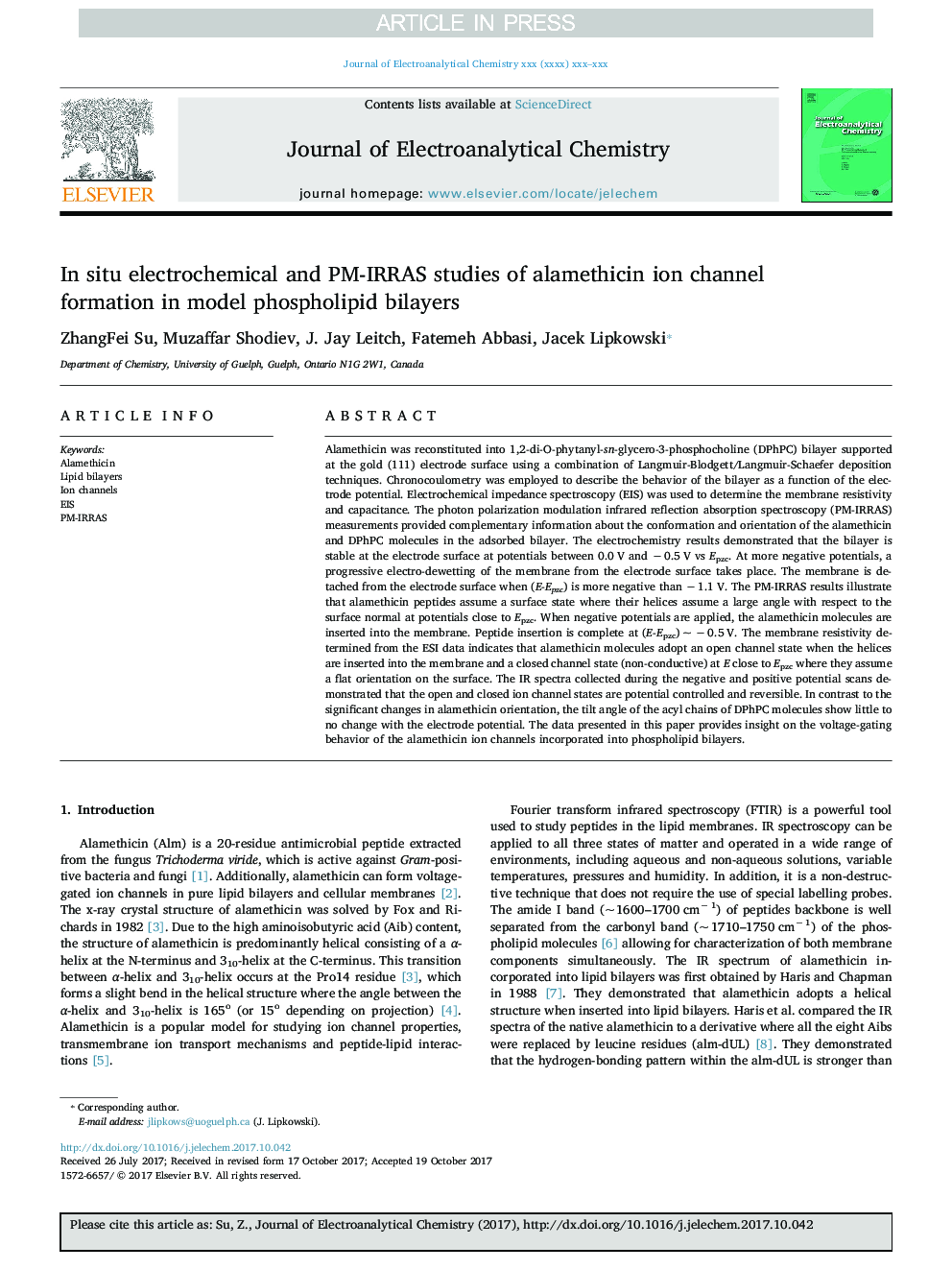| کد مقاله | کد نشریه | سال انتشار | مقاله انگلیسی | نسخه تمام متن |
|---|---|---|---|---|
| 6661762 | 1426556 | 2018 | 9 صفحه PDF | دانلود رایگان |
عنوان انگلیسی مقاله ISI
In situ electrochemical and PM-IRRAS studies of alamethicin ion channel formation in model phospholipid bilayers
دانلود مقاله + سفارش ترجمه
دانلود مقاله ISI انگلیسی
رایگان برای ایرانیان
کلمات کلیدی
موضوعات مرتبط
مهندسی و علوم پایه
مهندسی شیمی
مهندسی شیمی (عمومی)
پیش نمایش صفحه اول مقاله

چکیده انگلیسی
Alamethicin was reconstituted into 1,2-di-O-phytanyl-sn-glycero-3-phosphocholine (DPhPC) bilayer supported at the gold (111) electrode surface using a combination of Langmuir-Blodgett/Langmuir-Schaefer deposition techniques. Chronocoulometry was employed to describe the behavior of the bilayer as a function of the electrode potential. Electrochemical impedance spectroscopy (EIS) was used to determine the membrane resistivity and capacitance. The photon polarization modulation infrared reflection absorption spectroscopy (PM-IRRAS) measurements provided complementary information about the conformation and orientation of the alamethicin and DPhPC molecules in the adsorbed bilayer. The electrochemistry results demonstrated that the bilayer is stable at the electrode surface at potentials between 0.0 V and â 0.5 V vs Epzc. At more negative potentials, a progressive electro-dewetting of the membrane from the electrode surface takes place. The membrane is detached from the electrode surface when (E-Epzc) is more negative than â 1.1 V. The PM-IRRAS results illustrate that alamethicin peptides assume a surface state where their helices assume a large angle with respect to the surface normal at potentials close to Epzc. When negative potentials are applied, the alamethicin molecules are inserted into the membrane. Peptide insertion is complete at (E-Epzc) ~ â 0.5 V. The membrane resistivity determined from the ESI data indicates that alamethicin molecules adopt an open channel state when the helices are inserted into the membrane and a closed channel state (non-conductive) at E close to Epzc where they assume a flat orientation on the surface. The IR spectra collected during the negative and positive potential scans demonstrated that the open and closed ion channel states are potential controlled and reversible. In contrast to the significant changes in alamethicin orientation, the tilt angle of the acyl chains of DPhPC molecules show little to no change with the electrode potential. The data presented in this paper provides insight on the voltage-gating behavior of the alamethicin ion channels incorporated into phospholipid bilayers.
ناشر
Database: Elsevier - ScienceDirect (ساینس دایرکت)
Journal: Journal of Electroanalytical Chemistry - Volume 819, 15 June 2018, Pages 251-259
Journal: Journal of Electroanalytical Chemistry - Volume 819, 15 June 2018, Pages 251-259
نویسندگان
ZhangFei Su, Muzaffar Shodiev, J. Jay Leitch, Fatemeh Abbasi, Jacek Lipkowski,